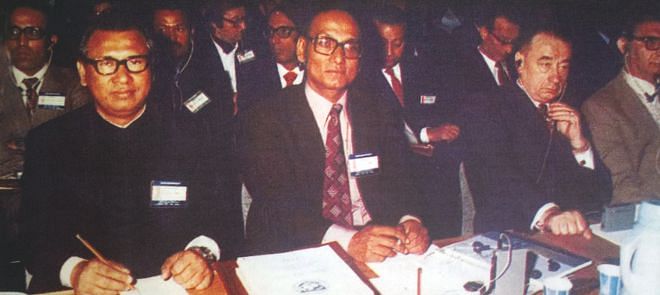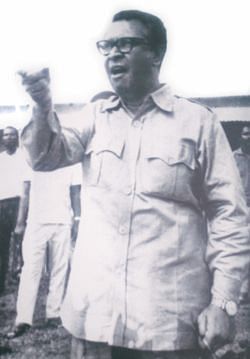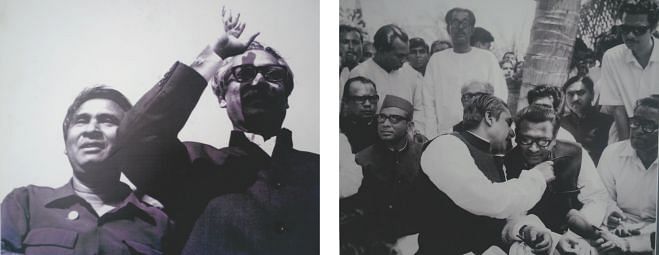A walk through a luminous life


As true as it is that Bangladesh's liberation was a culmination of valour, selflessness and sacrifices of millions of people, it is equally true that there were a handful of people who firmly held the fabric of that nationalistic struggle and without them our Liberation War could have well been a valiant failure. Tajuddin Ahmad, the first Prime Minister of Bangladesh, was one such cornerstone of the struggle of 1971. Unfortunately, though, a big part of today's generation know little about this remarkable statesman and his contributions to the country's Liberation War. Not many know that it was he who formed the first Bangladesh government (in Meherpur, Kushtia), formed the first Bangladesh Forces, was a key figure in supervising and mandating war efforts, and initiated a number of diplomatic and cultural missions worldwide to gather support for the cause of Bangladesh. He was in charge of the nation's affairs until Bangabandhu's return – of whom he was a close associate – and served under him as finance minister until 1974.
To mark the 89th birth anniversary of Tajuddin Ahmad (July 23), Gallery 21 in Dhanmondi (751 Satmasjid Road) opened a photography exhibition on this towering figure on July 18.
It is an overpowering experience just walking through the gallery. From his early days at Kaligonj High School when he was involved with the Scouts movement, to his social involvement (holding placards during a demonstration for food during the famine of 1956) to political leadership (addressing rallies in 1969) and close association with Bangabandhu are clear in numerous images. Always close by Bangabandhu, he is often seen in a cluster with other major political leaders of the time, including Syed Nazrul Islam and AHM Kamruzzaman, and often speaking one-on-one with Bangabandhu Sheikh Mujibur Rahman. As the timeline moves ahead to the Liberation War, the images also change, with Tajuddin seen visiting various liberated areas (Muktanchal) and freedom fighters' camps and hospitals, addressing gatherings and keeping people's morale high. After the War, his job was far from done, and he moved around here to there, making administrative reforms wherever needed. He is seen with the Commander of the Bangladesh Forces Colonel MAG Osmani talking to members of the Armed Forces, and receiving Bangabandhu on his return from Pakistan. Some historic moments captured on film include the return of Bangabandhu and the first parliamentary session of Bangladesh.

Another section has photos display his diplomatic efforts and international connections, right after Bangladesh's birth. From meetings with Indira Gandhi to Robert McNamara and other world leaders, to attending World Bank conferences, he did it all.
Another brief section shows Tajuddin the earnest family man, with wife Syeda Zohra Tajuddin, daughters Sharmin Ahmad (Reepi), Simeen Hussain (Rimi), Mahjabin Ahmad (Mimi) and son Tanjim Ahmad Sohel Taj. The heartfelt family portraits unveil the other side of the great political leader.
Marking his birth anniversary, a book of letters to and from him, titled “Tajuddin Ahmed er Chithi”, was also published on July 19. The exhibition, meanwhile, remains open till September 8 (from 12 noon-8pm), with a break from July 26-August 1 for Eid.
While a big portion of today's youth has diverged away from taking an interest in the country's history, an exhibition like this is a definite boost for the cause – of letting today's generation know how Bangladesh came into being, and the people who played the most instrumental of roles in a struggle that saw three million people sacrificing their lives for freedom.

 For all latest news, follow The Daily Star's Google News channel.
For all latest news, follow The Daily Star's Google News channel. 



Comments